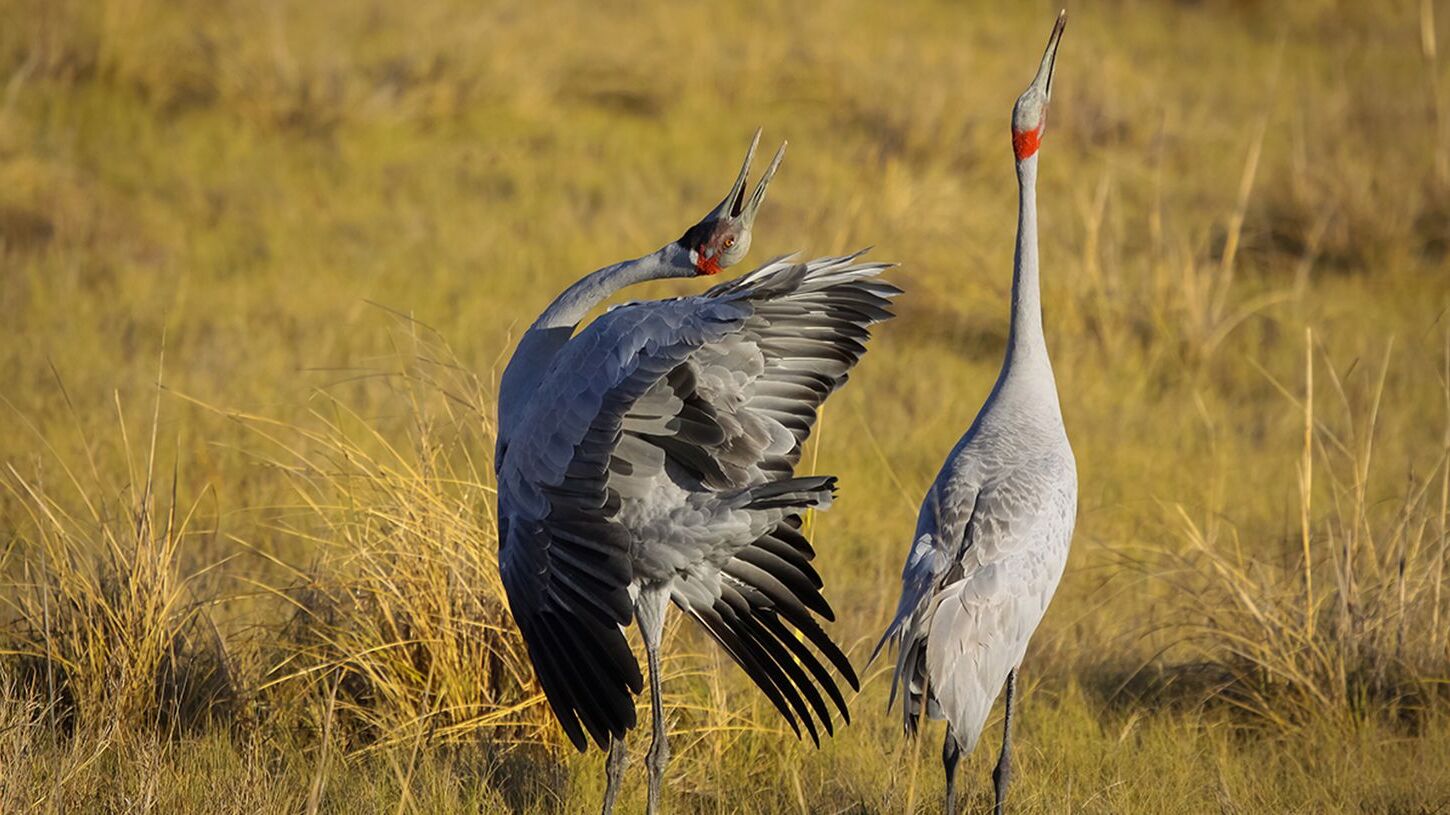
In the wild, love takes on many forms, often stranger than fiction. Unusual mating rituals in nature showcase the incredible diversity of life and the lengths creatures go to ensure their genes survive. From the clingy male anglerfish who fuses with his mate to the elaborate dances of birds of paradise, these behaviors can be both bizarre and captivating. Some species, like the octopus, use clever disguises, while others, such as the hippopotamus, rely on less savory methods like flinging feces. These rituals highlight the creativity and sometimes brutal reality of reproduction in the animal kingdom, offering a glimpse into the complex strategies evolved over millennia.
Key Takeaways:
- Nature's Mating Game: From clingy angler fish to rock-collecting penguins, animals have fascinating and sometimes bizarre mating rituals that ensure survival and genetic diversity.
- Love in the Wild: From simulated sex in all-female lizards to deadly dances of praying mantises, nature's mating rituals are diverse, unique, and essential for species survival.
The Clingy Boyfriend: Angler Fish
In the dark depths of the ocean, angler fish have one of the most bizarre mating rituals.
- Male angler fish attach themselves to females by biting into their skin.
- Over time, the male becomes a permanent parasite, fusing with the female's body.
- The male loses all independent functions, except for his gonads, which the female uses when ready to reproduce.
The Identity Reveal: Octopus
Octopuses have a complex and sometimes deceptive mating culture.
- Some males guard their female mates by living in adjacent dens.
- "Sneaker" males disguise themselves as females to sneak past guards and mate.
- This impersonation helps avoid being cannibalized by the female.
The Stinky Showdown: Hippopotamus
Hippos use a rather smelly method to attract mates.
- Males fling urine and feces with their tails to impress females.
- Females show interest by raising their rear out of the water.
- This behavior, known as "submissive defecation," signals readiness to mate.
The Penile Duel: Flatworms
Flatworms engage in a unique and aggressive mating ritual.
- These hermaphrodites use sharp, two-headed penises to stab each other.
- The goal is to inject sperm into the other flatworm.
- The winner fertilizes the loser's eggs, ensuring reproduction.
The Free-Love Ape: Bonobos
Bonobos are known for their promiscuous and social mating behaviors.
- They engage in a variety of recreational sex acts with both sexes.
- Sex is used to make friends, form bonds, and as currency.
- Bonobos are one of the few non-human animals to copulate face-to-face.
The Gender Swap: Clownfish
Clownfish have a fascinating hierarchical and gender-changing mating system.
- All clownfish are born male and fight for dominance.
- The top male transitions into a female, becoming the group's only female.
- This dominant female mates with the second-largest male.
The Frenzied Mating: Marsupial Mice
Marsupial mice experience a short but intense mating period.
- After puberty, male marsupial mice's testes disintegrate.
- They spend their remaining time frantically seeking mates.
- Despite the urgency, males avoid fighting during this desperate bid to reproduce.
The Gift-Giver: Nursery Web Spiders
Male nursery web spiders use gifts to attract mates.
- They present females with gifts wrapped in white silk.
- These gifts are essential for securing a place in the female's web.
- Some males deceive by offering fake gifts, leading to conflicts.
The Extreme Fencers: Sea Slugs
Sea slugs engage in intense battles to decide reproductive roles.
- These simultaneous hermaphrodites use "penis fencing" to determine who fertilizes eggs.
- Sperm can be injected anywhere on the body to fertilize eggs.
- The process can be fatal if repeated multiple times.
The Simulated Sex: New Mexican Whiptail Lizard
Despite being an all-female species, these lizards engage in simulated sex.
- This behavior results from hybridization and ensures genetic diversity.
- Simulated sex leads to more successful reproduction.
- It helps maintain the species' genetic health.
The Rock Collector: Adelie Penguins
Male Adelie penguins use rocks to woo their mates.
- They collect rare rocks to present to females.
- Females use these rocks to line their nests.
- If another male presents a better rock, the female may switch mates.
The Dance Master: Bird of Paradise
Bird of paradise males perform elaborate dances to attract females.
- They inherit dance moves from their fathers and refine them over time.
- Males push their feathers up to form a skirt before dancing.
- Females watch from above, choosing the best dancer.
The Decorative Display: Bowerbirds
Bowerbirds build intricate structures to attract mates.
- Males use twigs, bones, shells, and stones to create bowers.
- They decorate these structures with shiny objects and flower petals.
- The quality of the display is crucial for winning over females.
The Deadly Dance: Praying Mantis
Mating for praying mantis males is a high-risk activity.
- Males are often eaten by females after mating.
- Some males manage to escape uninjured.
- Females that consume males lay more eggs, benefiting their reproduction.
The Mid-Air Mating: Honey Bees
Honey bees have a unique and fatal mating process.
- Males mate with females in mid-flight.
- The male's reproductive organ and abdominal tissue are left in the female.
- Males die shortly after mating, as they are no longer needed.
The Urine Test: Giraffes
Male giraffes use a peculiar method to determine a female's readiness to mate.
- They drink the female's urine to check for fertility.
- If the female is ready, males may fight off competitors.
- They use their long necks to swing at other suitors.
The Mating Ball: Red Garter Snakes
Red garter snakes engage in intense competition for mating.
- Up to 100 males can pursue a single female simultaneously.
- They form a large mating ball, increasing the chances of successful fertilization.
Nature's Wild Love Stories
Nature's mating rituals are as diverse as they are fascinating. From the clingy angler fish to the dancing bird of paradise, each species has its own unique way of ensuring survival. These behaviors highlight the creativity, complexity, and sometimes brutal reality of life in the wild. Whether it's the penis fencing flatworms or the rock-collecting Adelie penguins, these rituals show the lengths to which animals go to reproduce. Understanding these practices gives us a glimpse into the evolutionary pressures shaping the animal kingdom. It also reminds us of the intricate web of life that connects all living beings. So next time you see a pufferfish's sand art or hear about a bonobo's free-love lifestyle, remember there's a fascinating story behind it. Nature never ceases to amaze with its wild love stories.
Frequently Asked Questions
Was this page helpful?
Our commitment to delivering trustworthy and engaging content is at the heart of what we do. Each fact on our site is contributed by real users like you, bringing a wealth of diverse insights and information. To ensure the highest standards of accuracy and reliability, our dedicated editors meticulously review each submission. This process guarantees that the facts we share are not only fascinating but also credible. Trust in our commitment to quality and authenticity as you explore and learn with us.


